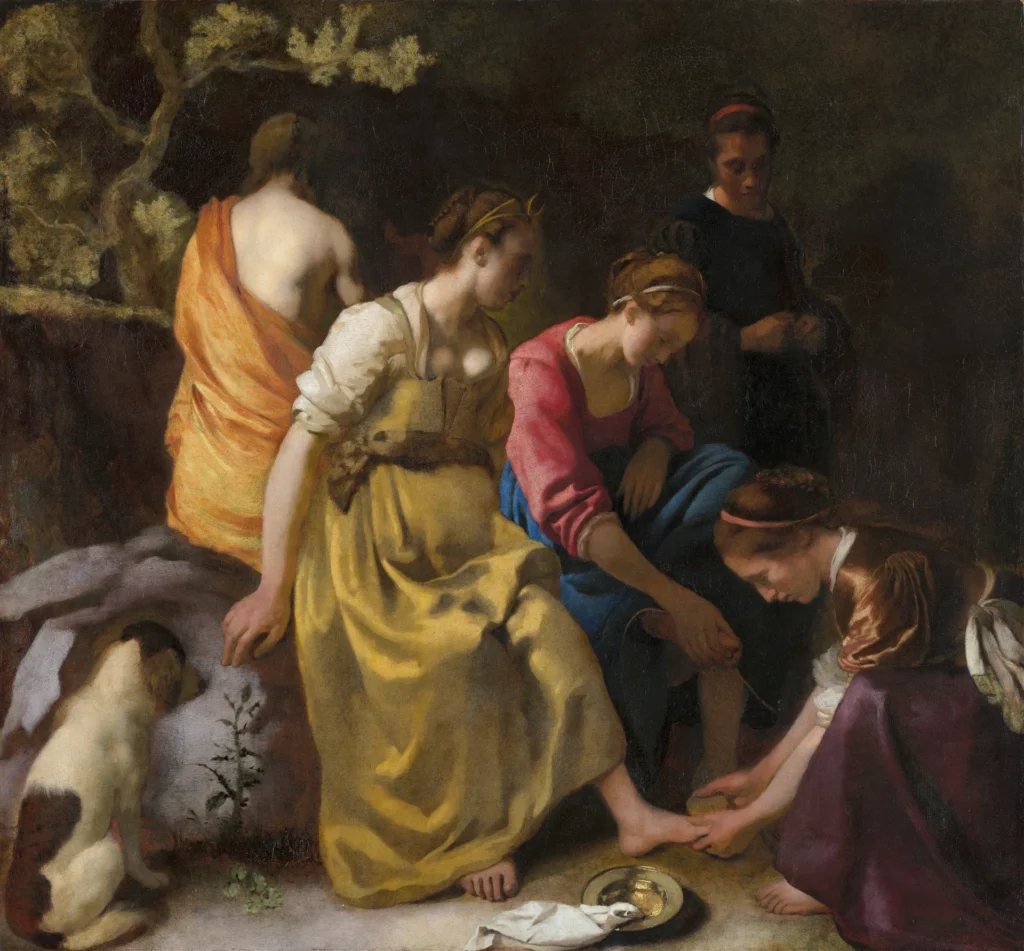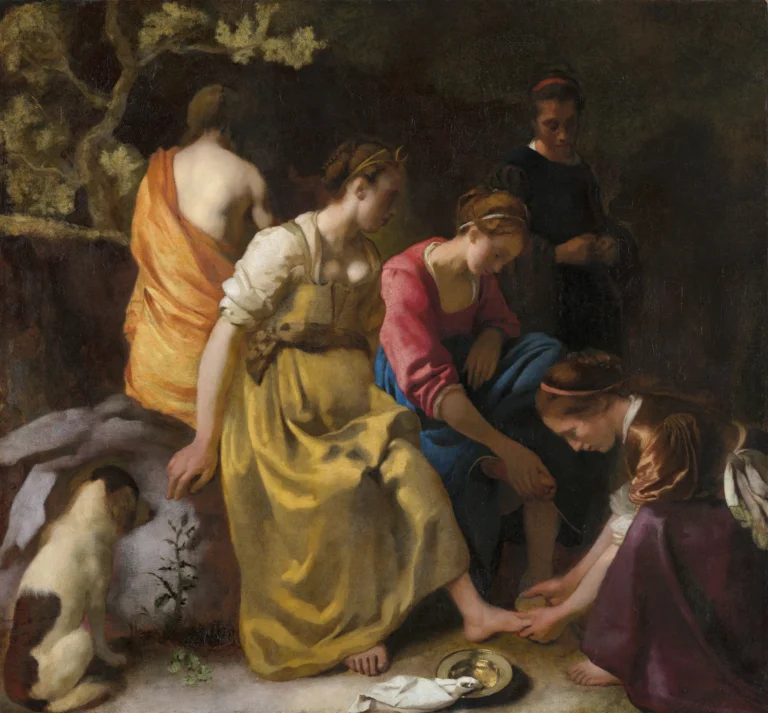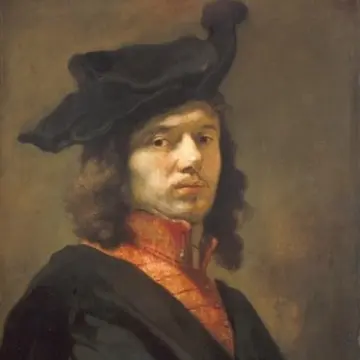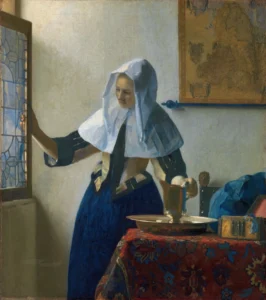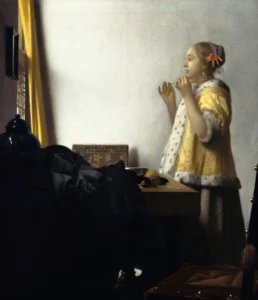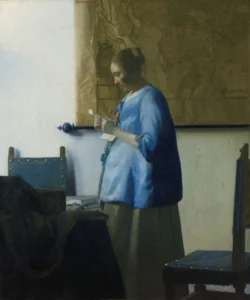Diana and Her Nymphs (1653 - 1654)
Created around 1653-1654, Diana and Her Nymphs depicts the Roman goddess of the hunt, Diana, along with her nymphs in a tranquil natural setting. This earlier work showcases Vermeer's exquisite handling of light and color, inviting viewers into a mythical moment that reflects themes of purity and reflection. The intricate details, including the crescent moon diadem and the nymphs' actions, bring depth to the composition, making it a noteworthy piece of the Dutch Golden Age.
1653-1654
About the Artwork
The story behind Diana and Her Nymphs reveals Vermeer's early exploration of mythological themes before he became famous for his interior scenes. The painting captures the moment after a hunt, where Diana is revered yet contemplative. Each nymph plays a role in this serene composition; one washes Diana's feet while the others engage in quiet reflection. The presence of symbols such as the thistle raises questions about desire and chastity, which were central to Diana's attributes. Its initial misattribution to Nicolaes Maes illustrates the complexities of art provenance, but its eventual recognition solidifies Vermeer’s position in art history. This painting represents the blend of serene beauty with deeper emotional undercurrents, manifesting the Dutch Golden Age's rich artistic traditions.
Did You Know
Diana is often depicted with a crescent moon and a hunting dog, symbolizing her role as the goddess of the moon and protector of wild animals, embodying both purity and the hunt.
Diana and Her Nymphs is one of Vermeer’s early compositions, showcasing the artist’s burgeoning talent before he became renowned for his intimate interior scenes.
Though Vermeer is known for his unique style, the use of shadow and deep colors in this painting reflects the influence of his contemporary, Rembrandt, often highlighting the emotional depth in his works.




